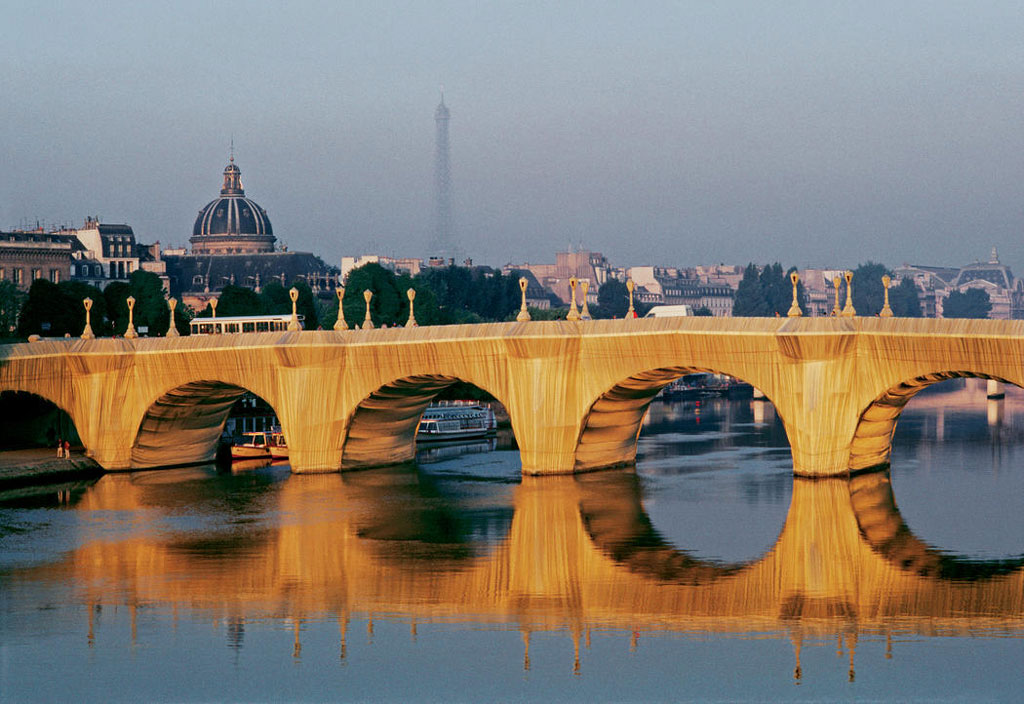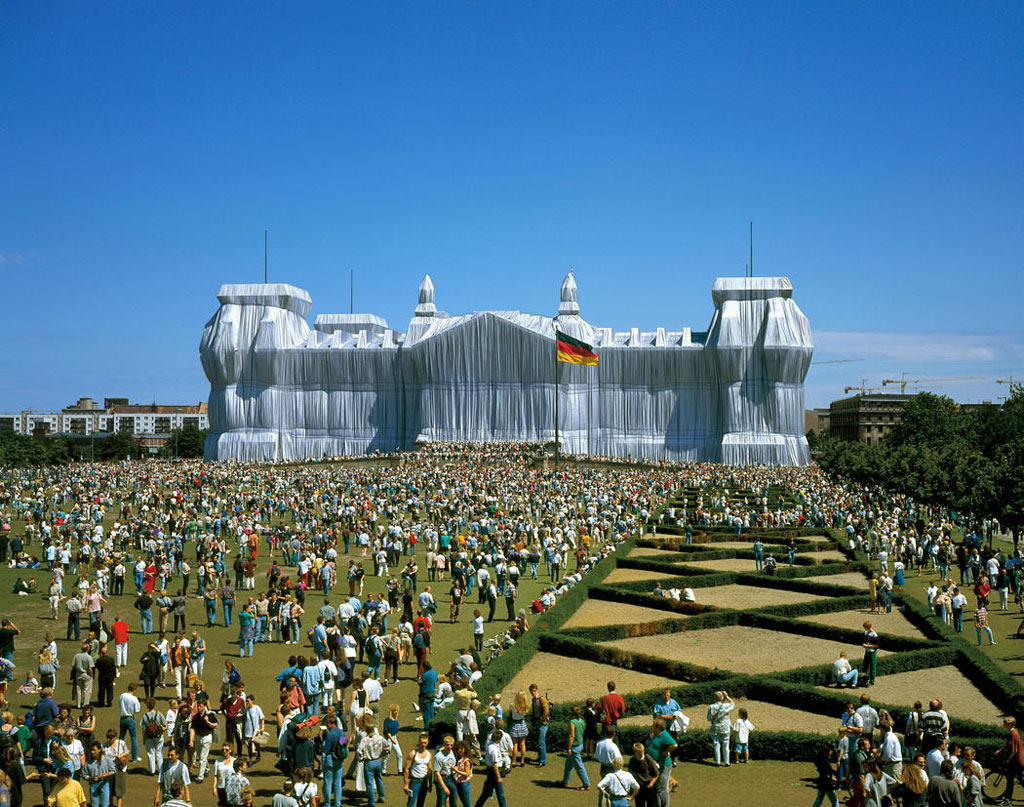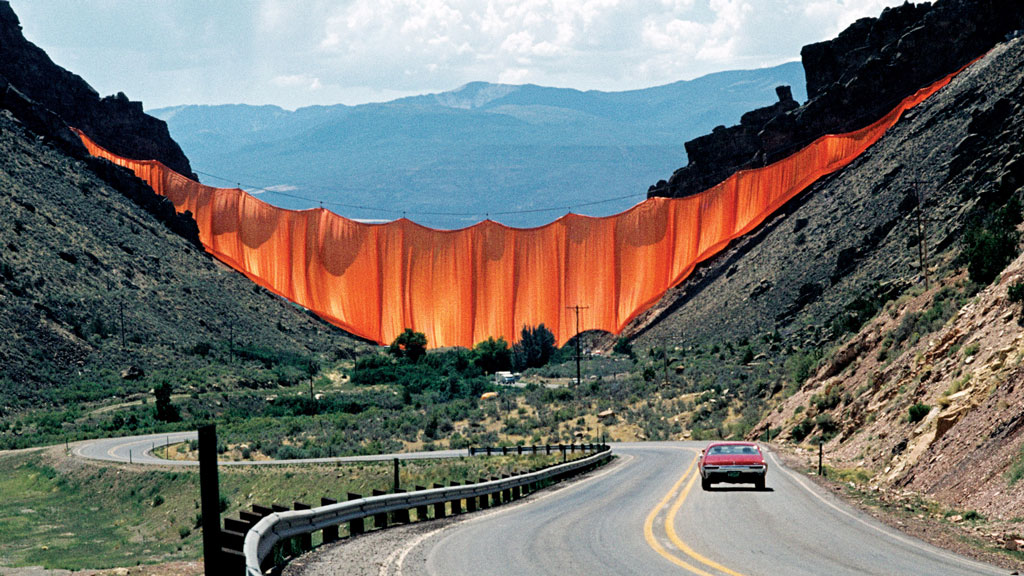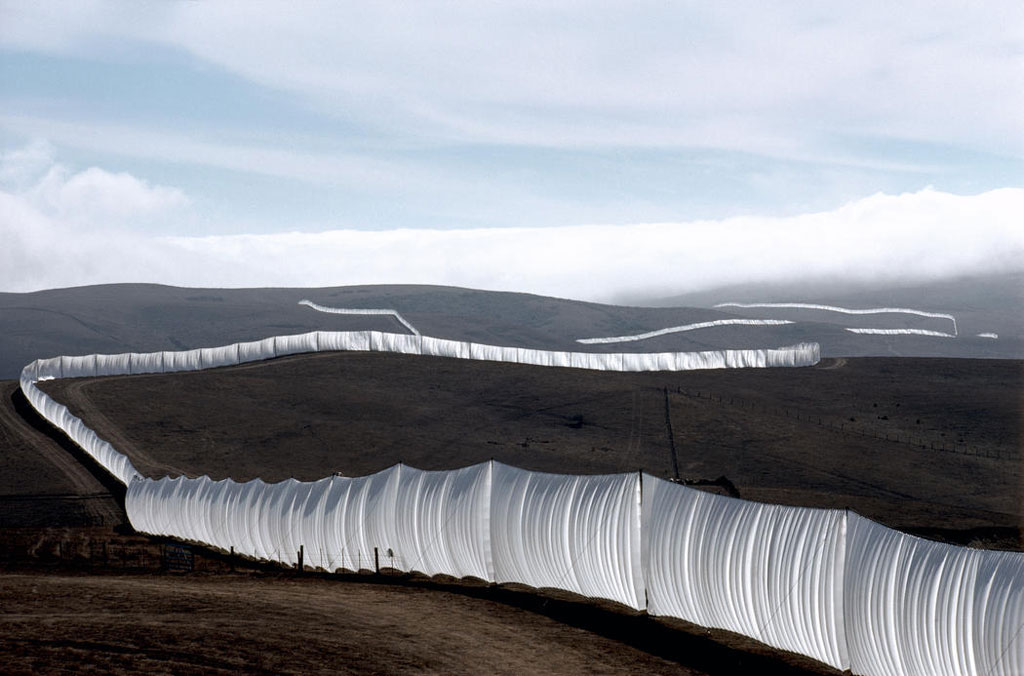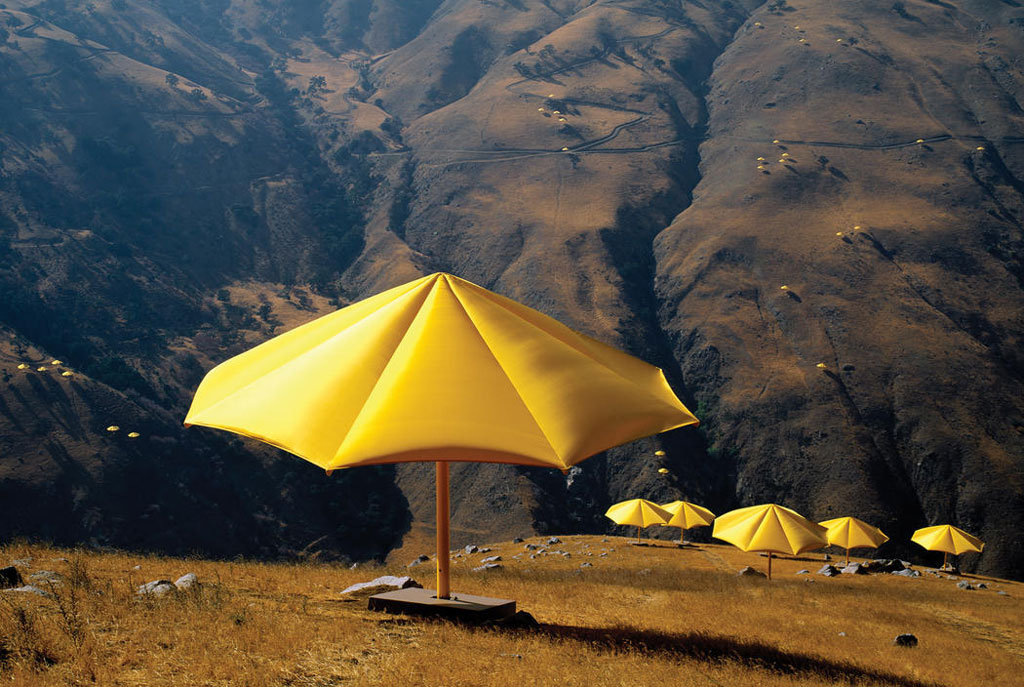TRACES: CHRISTO
Today is the occasion to bear in mind Christo Vladimirov Javacheff (13/6/1935-31/5/2020). Whereas Land Artists usually made a point of blurring the lines of distinction between the art work itself and its natural setting and/or materials, Christo and his wife Jeanne-Claude’s art relied on developing high contrast between the engineered, man-made elements and the site’s organic characteristics. Their work therefore pushes the envelope of what constitutes site-specific, large-scale installation art, and expands the genre discourse to incorporate controversial themes of industrialization, bureaucratization, and late capitalism. Through documents or interviews, starting with: moments and memories, we reveal out from the past-unknown sides of big personalities, who left their indelible traces in time and history…
By Efi Michalarou
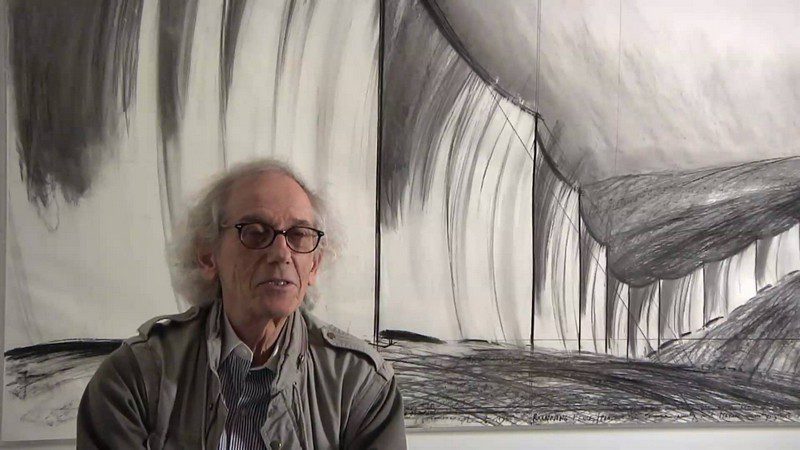 Christo was born in Gabrovo, Bulgaria. Professors from the Academy who visited his family observed Christo’s artistic talent while he was still of a very young age. Studied art at the Sofia Academy from 1953 to 1956 and went to Prague until 1957, when he left for the West by bribing a railway official. Christo quickly settled in Vienna and enrolled at the Vienna Academy of Fine Arts. He met his wife Jean-Claude in Paris in October 1958. Their works were credited to just “Christo” until 1994, when the outdoor works and large indoor installations were retroactively credited to “Christo and Jeanne-Claude”. Christo & Jean Claude visually impressive and often controversial as a result of its scale, the artists have repeatedly denied that their projects contain any deeper meaning than their immediate aesthetic impact. The purpose of their art, they contend, is simply to create works of art for joy and beauty and to create new ways of seeing familiar landscapes. To his critics Christo replies “I am an artist, and I have to have courage … Do you know that I don’t have any artworks that exist? They all go away when they’re finished. Only the preparatory drawings, and collages are left, giving my works an almost legendary character. I think it takes much greater courage to create things to be gone than to create things that will remain”. In 1968, Christo and Jeanne-Claude had the chance to participate at the Documenta 4 in Kassel. In addition to the sculpture, Corridor Storefronts, the couple wanted to build an air package with a volume of 5,600 m3, which would be lifted by cranes and visible from a distance of 25 km. At the end of 1970 they began their preparations for the Valley Curtain project. A 400-meter-long cloth was to be stretched across Rifle Gap, a valley in the Rocky Mountains near Rifle, Colorado. In 1972, Christo and Jeanne-Claude began preparations for Running Fence: a fabric fence, supported by steel posts and steel cables, running through the landscape and leading into the sea. The fence was to be 5.5 meters high and 40 kilometers long and constructed in Sonoma and Marin Counties, California. Christo and Jeanne-Claude planned a project based on Jeanne-Claude’s idea to surround eleven islands in Miami’s Biscayne Bay with of pink polypropylene floating fabric. The couple received permission to wrap the Pont-Neuf after nine years of negotiations with the mayor of Paris, Jacques Chirac, and preparations for the project began. The wrapping began on 25 August 1985 and was completed on 22 September. In the next two weeks over three million people visited the project. Christo and Jeanne-Claude prepared for their next project, “The Umbrellas”. The plan was to have yellow umbrellas set up in California and blue umbrellas in Japan at the same time. In December 1990, after much preparation, the first steel bases for the umbrellas were installed. In September 1991 the umbrellas were brought to their places by 2,000 workers. In California, some of the bases were transported to the site by helicopter. After the project “The Umbrellas” Christo and Jeanne-Claude concerned themselves again, with wrapping the Reichstag in Berlin. With the support of the President of the Parliament, Rita Süssmuth. On 25 February 1995, the Bundestag allowed the project to go ahead. On 3 January 2005, work began on the installation of the couple’s most protracted project, The Gates, in Central Park in New York City. The title is “The Gates, Central Park, New York, 1979–2005” in reference to the time that passed from their initial proposal until they were able to go ahead with it. “The Gates” was open to the public from 12 February until 27 February 2005. The famous duo of artists has been registered in the history of contemporary art, not only for its artistic value, but primarily for the risky and time-consuming efforts to make projects and landscape architecture, ephemeral works, that for a while become part of the landscape, face each other with nature exceeding it, exceeds them, includes and contains them, with the passion and the truth that is carried by the great artists.
Christo was born in Gabrovo, Bulgaria. Professors from the Academy who visited his family observed Christo’s artistic talent while he was still of a very young age. Studied art at the Sofia Academy from 1953 to 1956 and went to Prague until 1957, when he left for the West by bribing a railway official. Christo quickly settled in Vienna and enrolled at the Vienna Academy of Fine Arts. He met his wife Jean-Claude in Paris in October 1958. Their works were credited to just “Christo” until 1994, when the outdoor works and large indoor installations were retroactively credited to “Christo and Jeanne-Claude”. Christo & Jean Claude visually impressive and often controversial as a result of its scale, the artists have repeatedly denied that their projects contain any deeper meaning than their immediate aesthetic impact. The purpose of their art, they contend, is simply to create works of art for joy and beauty and to create new ways of seeing familiar landscapes. To his critics Christo replies “I am an artist, and I have to have courage … Do you know that I don’t have any artworks that exist? They all go away when they’re finished. Only the preparatory drawings, and collages are left, giving my works an almost legendary character. I think it takes much greater courage to create things to be gone than to create things that will remain”. In 1968, Christo and Jeanne-Claude had the chance to participate at the Documenta 4 in Kassel. In addition to the sculpture, Corridor Storefronts, the couple wanted to build an air package with a volume of 5,600 m3, which would be lifted by cranes and visible from a distance of 25 km. At the end of 1970 they began their preparations for the Valley Curtain project. A 400-meter-long cloth was to be stretched across Rifle Gap, a valley in the Rocky Mountains near Rifle, Colorado. In 1972, Christo and Jeanne-Claude began preparations for Running Fence: a fabric fence, supported by steel posts and steel cables, running through the landscape and leading into the sea. The fence was to be 5.5 meters high and 40 kilometers long and constructed in Sonoma and Marin Counties, California. Christo and Jeanne-Claude planned a project based on Jeanne-Claude’s idea to surround eleven islands in Miami’s Biscayne Bay with of pink polypropylene floating fabric. The couple received permission to wrap the Pont-Neuf after nine years of negotiations with the mayor of Paris, Jacques Chirac, and preparations for the project began. The wrapping began on 25 August 1985 and was completed on 22 September. In the next two weeks over three million people visited the project. Christo and Jeanne-Claude prepared for their next project, “The Umbrellas”. The plan was to have yellow umbrellas set up in California and blue umbrellas in Japan at the same time. In December 1990, after much preparation, the first steel bases for the umbrellas were installed. In September 1991 the umbrellas were brought to their places by 2,000 workers. In California, some of the bases were transported to the site by helicopter. After the project “The Umbrellas” Christo and Jeanne-Claude concerned themselves again, with wrapping the Reichstag in Berlin. With the support of the President of the Parliament, Rita Süssmuth. On 25 February 1995, the Bundestag allowed the project to go ahead. On 3 January 2005, work began on the installation of the couple’s most protracted project, The Gates, in Central Park in New York City. The title is “The Gates, Central Park, New York, 1979–2005” in reference to the time that passed from their initial proposal until they were able to go ahead with it. “The Gates” was open to the public from 12 February until 27 February 2005. The famous duo of artists has been registered in the history of contemporary art, not only for its artistic value, but primarily for the risky and time-consuming efforts to make projects and landscape architecture, ephemeral works, that for a while become part of the landscape, face each other with nature exceeding it, exceeds them, includes and contains them, with the passion and the truth that is carried by the great artists.


